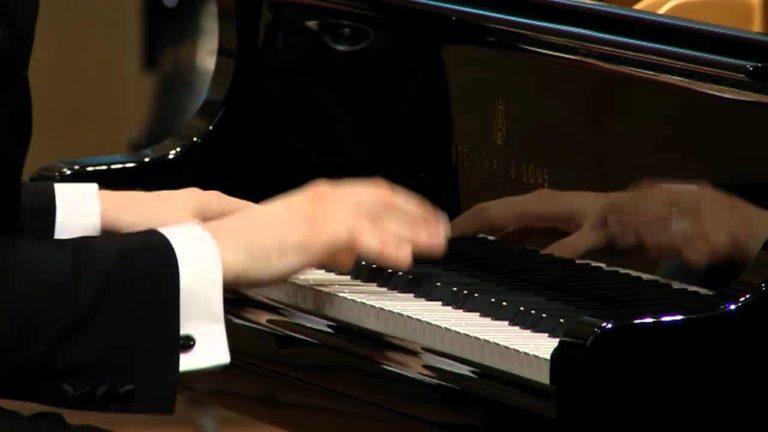Chopin Fantaisie-Impromptu: The Secret
The fantaisie impromptu is yet another of Chopin’s acclaimed compositions, this wonderful classic piano masterpiece is one of Chopin’s most popular romantic songs. It was composed in the year 1834, but became known only after the death of the unequaled classical Polish composer.
It is a very famous piano piece, its melody is presented with great lightness and softness through beautiful arpeggios and infinite scales performed at the piano, its movements are fast and the rhythm quite alternating between the right hand and the left hand.
According to some historical accounts Chopin did not like this piece very much, because he thought his music was similar to Moonlight sonata by the German composer Ludwig Van Beethoven.
What do you think about this? Are you two pieces of piano really alike?
If you are learning piano or are already an experienced pianist and want to know other secrets of this incredible work, then stay with us, let’s listen and learn some details of this well-known piece of Chopin.
You might also like: Chopin Nocturnes – 21 Best piano songs of all time
To start I would recommend them 5 plays of the Fantasie impromptu op. 66.
As we all know, many musicians interpret the same work differently, this is totally noticeable if we pay close attention and listen as various performers play the same song. You will begin to hear some details that are proper to each pianist. (Listen and choose your favorite version)
Listening to the memorable piano piece
Here the magnificent pianist Anastasia Huppmann hypnotizes us with this beautiful interpretation.
“Simplicity is the ultimate achievement. After having touched a number of notes and more notes, it is the simplicity that emerges as the crowned reward of art. “- Frederick Chopin
Watch as the young pianist Simonas Miknius and Arielle joue play Chopin’s Fantaisie-Impromptu
“Take off your hats, gentlemen, he is a genius.” – Robert Schumman
See also the surprising Russian pianist Lola Astanova playing the composition of Chopin
“Music was his language, the divine tongue through which he expressed a whole realm of sentiments that only the select few can appreciate… The muse of his homeland dictates his songs, and the anguished cries of Poland lend to his art a mysterious, indefinable poetry which, for all those who have truly experienced it, cannot be compared to anything else…” – George Sand
Daniil Trifonov Playing the Fantaisie-Impromptu In C-Sharp Minor, Op. 66
“There is something fundamentally personal and at the same time so very masterly in his playing that he may be called a really perfect virtuoso.” – Franz Liszt
Learn to play piano with Chopin’s Fantasie impromptu
For those who would like to learn this is only two possible paths. Take piano lessons with some good classical piano teacher in your city, you will find many of them in conservatories and institutes dedicated to the study of classical music and other musical genres.
The second option would be to take piano lessons online: So looking to help friends who do not have access to music conservatories and also to those who do not find good piano teachers in their region I will indicate here some very good things that I found in my wanderings over the internet.
Learn in this video of Paul Barton plus some historical facts and see some tutorials that show details about the technique that Chopin used to compose this brief musical fantasy.
See this piano tutorial and discover some secrets revealed by the pianist Horacio Lavandera
Learn to play Fantasie Impromptu by practicing the piano slowly
Fantaisie Impromptu sheet music study reading and playing (Part 2 and 3)
“One needs only to study a certain positioning of the hand in relation to the keys to obtain with ease the most beautiful sounds, to know how to play long notes and short notes and to achieve certain unlimited dexterity. A well formed technique, it seems to me, can control and vary a beautiful sound quality.” – Frederick Chopin





